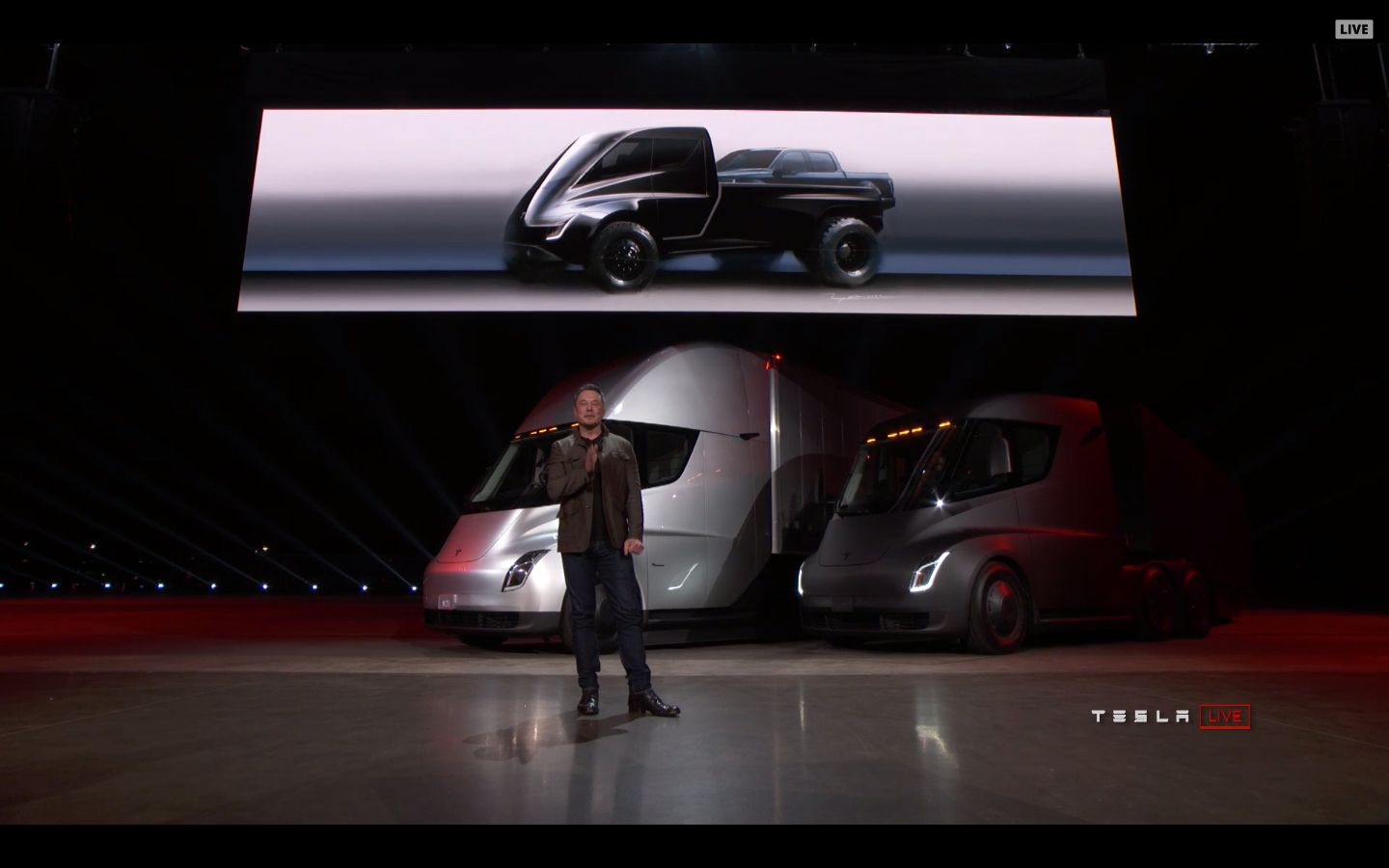Picture this: a high-riding half-ton pickup truck with an all-electric drivetrain hung between hydro-formed, fully boxed frame rails and the center of gravity akin to a BMW 5 Series rather than a top-heavy truck. That’s a far-fetched idea, but it might be something Tesla could build. See, during the debut of Tesla’s new Semi truck and the surprise reveal of the 2020 Tesla Roadster, this little sketch was briefly mentioned by Elon Musk.
“It’s a pickup truck that can carry a pickup truck,” Musk is reported to have said. We wouldn’t know since we’re apparently not cool or hipster enough to get invited to Tesla events. Bearded and skinny jean-wearing millennials also say Muck muttered, “By the way, you will actually be able to drive that with a normal driver’s license. It’s kind of wrong, but I like it.” So apparently this outlandish pickup thing has more traction than a locked differential – well, as much traction as afforded by the wishful dreams of the real-life Tony Stark.
But for real – Tesla could actually start something here. Pickups have maintained the same basic layout since their invention in the early 1900s. The engine goes in front, followed by the cab, and bookended by the cargo bed. Why change what works? Well, if Musk has his way, this cab-over style consumer pickup could revolutionize the way pickups are picking stuff up.
Continue reading for more of my rantings.
Tesla out pickups the Big Three
Ford, General Motors, and Ram – the big three. These guys have been doing business as usual for 100 years. Sure, there are small innovations like automatic transmission, seating for more than just three people, and split-folding tailgates, but the 2018 Ford F-150 basically looks the same as a 1948 F-100. (Remember: engine, cab, bed.) But should Tesla pull a page from old-school 18-wheelers’ playbook, a cab-over design could add an unexpected level of utility and functionality.
By eliminating the long hood, forward visibility increases dramatically, while shrinking the overall length of the truck. A crew cab, long-bed configuration might be the same length as a current regular cab, long-bed pickup. That means easier parking, better views outside, and thanks to that low-slung battery pack between the frame rails, a lower center of gravity and therefore a more stable ride.
Of course, the two biggest hindrances will be electric range and accident survivability. Tesla appears to have figured out how to make an 18-wheeler pull 80,000 pounds over 500 miles on a single change. God knows how much the thing weights though, so that will have to be addressed. More to the point, truck guys aren’t going to give up driving range and capability for “going green” or saving the polar bears. It just won’t happen. Such a truck would need a 400- to 500-mile range in order to be commercially successful.
Hurdle number two is occupant safety during a crash. With a shorter hood and a smaller crumple zone, impact forces will have to be distributed elsewhere along the chassis and within the cab. Musk and his engineers have their work cut out on that one.
Clear the roadblocks, though, and a cab-over half-ton pickup might not be a bad idea after all. In fact, it could very well start a revolution in the industry. Might the 2030 Chevrolet Silverado or Ford F-150 look like this? Anything is possible these days.
One thing is for sure – Tesla’s implementation of a “thermonuclear blast-proof” windshield (or at least an impact-resistant one) should quickly make its way across the auto industry. Having road debris fly through the windshield is nasty little fear of mine. Thanks, Elon, for making a solution.
What do you think? Should Tesla build a cab-over half-ton pickup? Would it sell and would other automakers pick up on the idea? Let me know your thoughts in the comments below.
References
Tesla Semi
Read our full review on the 2019 Tesla Semi.
Read more Tesla news.

